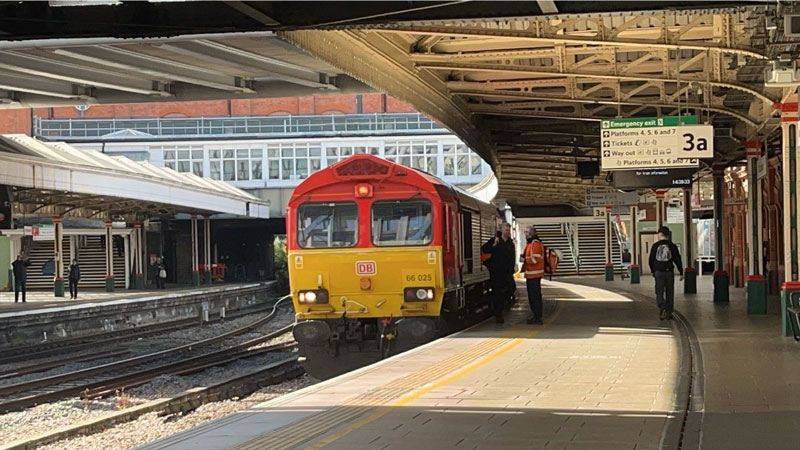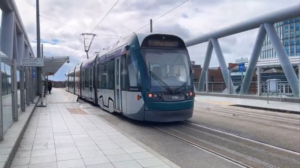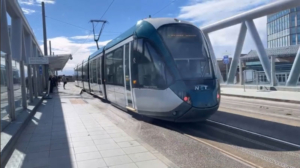Hello again, readers,
Welcome back to the Traction Blog! This month, I’ll be covering my trip to Nottingham Station—the busiest station in the East Midlands and second busiest in the entire Midland region, after Birmingham New Street. It’s an ideal spot for trainspotters, especially those keen on collecting numbers of various EMR units like the Class 170s and 222s. The station is also a key part of the Nottingham Express Transit (NET) tram network, and if you’re lucky, you might catch the occasional freight service. Below, I’ll share my findings and recommendations!
Nottingham Station is part of the Midland Main Line network, with Nottingham serving as one of its terminus stations. The Nottingham branch of the Midland Main Line branches off at East Midlands Parkway, meaning mainline services to Sheffield don’t congest traffic through Nottingham. The station is managed by East Midlands Railway (EMR), which operates most services, though it’s also served by Northern and CrossCountry. Fun fact: Nottingham is the southernmost station on Northern’s service network!
As for the Nottingham Express Transit tram network, it’s one of the busiest parts of the station, with a tram passing in each direction every five minutes. During my visit, I saw the following types of trains passing through:
- Class 158 “Express Sprinter” Diesel Multiple Units (DMUs)
- Class 170 “Turbostar” DMUs
- Class 195 “Civity” DMUs
- Class 222 “Meridian” Diesel Electric Multiple Units (DEMUs)
East Midlands Railway plans to phase out its Class 158 units, which have been in service since 1990, in favour of Class 170s. The Class 170 is already the most common unit at the station. During my visit, I spotted 22 different units in total!
We also explored the tram station, located directly above the train station and part of the NET network. NET operates 37 trams: 15 “Bombardier Incentro AT6/5” units (in service since 2004 and numbered 201–215) and 22 “Alstom Citadis 302” units (introduced in 2014 and numbered 216–237). All the trams are named after local heroes, such as Torvill & Dean (201), Robin Hood (211), Brian Clough (215), and Mary Earps (222), to name a few. Out of the 37 trams, I managed to spot 25 in a single day!
For trainspotters, tram numbers are listed in books like The Spotter’s Companion, which is my current go-to resource.
I was also fortunate enough to catch two freight services operated by DB Cargo UK during my visit. Both stopped at Nottingham for a crew change. The first was locomotive 66656, hauling empty steel hoods to Boston Sleaford Sidings. This locomotive is notable for being renumbered from 66156 due to modified gear ratios. It looked fantastic as it rolled through Nottingham in its new livery.
The second freight locomotive was 66025, pulling oil tankers to Kingsbury Oil Sidings. This unit is part of the original 250 ordered by EWS in 1996 and has been in service since 1998, now 26 years old and still going strong.
Overall, it was a fantastic day at Nottingham, where I collected 38 new numbers for my book! Most came from the Nottingham trams and Class 170s, but both Class 66 freight units were new additions too. For trainspotters out there, whether you’re seasoned or just starting, I highly recommend considering tram spotting as well. Their numbers are included in spotter books, adding an extra challenge when visiting cities with tram networks. Trams vary in design just like trains, making each spotting experience unique.
Next month, I’ll be sharing my trainspotting adventure to Crewe, so stay tuned for that!
See you next month for another exciting trip.
Matthew 😊



